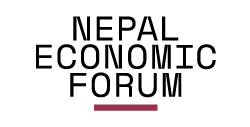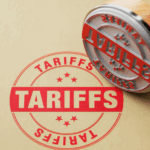You have likely encountered countless energy and climate outlooks from universities and think tanks. While they mean well, these reports can feel overwhelming, repetitive, and sometimes misleading. They create scenarios, make assumptions, crunch numbers, extrapolate and tell you stories – designed to persuade action, instill hope, or create a sense of urgency. However, these projections are shaped by diverse methodologies and the complexities involved in modeling, making it important to understand the considerations and contexts that inform the projected scenarios. It’s important to look beyond the numbers and scores and focus on understanding the bigger trends.
And here’s the paradox: even though these projections sound alarming, they only capture our attention for a moment. Then the world moves on to other headlines: the Israel-Gaza conflict, rising inflation, the US/EU-China trade war, or Prince William dancing to Taylor Swift’s ‘Shake It Off.’ Without sustained attention and action, these warnings take a back seat in the hustle and bustle of life.
Stalling Global Energy Transition: WEF’s Warning
Last week we got another reminder. The global energy transition faces mounting challenges. The World Economic Forum and Accenture highlighted a slowing pace of progress, even as many countries achieve record-high Energy Transition Index (ETI) scores. The ETI, much like a fitness test, measures a country’s preparedness for a sustainable energy transition. But just like being physically fit doesn’t mean you can scale Everest without issues, a high ETI score doesn’t guarantee a smooth and just transition from fossil fuelled world to a cleaner one. It’s a nuanced reality—countries can optimize their scores strategically, but the real-world challenges could still be tough or even tougher, requiring more than just metrics to overcome.
While the world technically seems to know how to achieve net zero by mid-century, polarized politics, growing socio-economic disparity, inflation, finances, and trade wars remain significant obstacles. It’s akin to mastering Everest simulations but lacking the necessary gear, resources, and teamwork and the fair and just distribution of essentials to actually reach the summit. This is the crux of the report. Achieving net zero requires strong financial backing, unparalleled global collaboration, unwavering commitment, and extensive support networks. For those who find the report overwhelming, here are the key takeaways.
Progress and Challenges (2015-2022): Over the past decade, the journey towards a sustainable energy future has seen both triumphs and trials. From 2015 to 2018, solar energy capacity more than doubled (227 GW to 480 GW), wind energy grew by 36% (adding over 150 GW), and hydropower and bioenergy also saw significant increases (hydropower from 1,060 GW to 1,160 GW; bioenergy from 106 GW to 123 GW), driven by decreasing costs and strong policy support. However, the pace slowed in the following years. The global pandemic in 2020 reduced energy demand sharply, and geopolitical tensions in 2021 and 2022, particularly in Europe, led to a resurgence of fossil fuels as countries like Germany increased coal production by 35% to reduce reliance on Russian gas. In the US, the Inflation Reduction Act spurred growth, but delays in connecting clean energy projects to the grid hampered progress.
Renewed Momentum (2023): By 2023, the energy transition regained some positive momentum. Innovations in energy storage and grid management began to address integration challenges, and renewable energy started outpacing traditional sources. Global renewable capacity reached 3,870 GW, with significant contributions from solar (345.5 GW of new capacity) and wind energy (total capacity of 1,017 GW), marking a stabilization in the market despite ongoing geopolitical volatility.
The report says, 107 of the 120 economies surveyed have demonstrated progress on their energy transition journeys in the past decade. However, Europe remains the undisputed leader in the ETI rankings for 2024, with Sweden and Denmark not just leading the pack, but consistently securing top three positions year after year. This dominance underscores the urgent need for other regions to step up their game and for global collaboration to ensure a truly equitable energy transition.
You can find detailed WEF infographics here
Navigating the Complexities of High ETI Scores
While the report highlights the progress of countries aligning their energy policies with global climate goals, the reality on the ground reflects a more intricate and nuanced journey. High Energy Transition Index (ETI) scores provide valuable insights but also invite reflection on how they capture the broader challenges and opportunities of the energy transition.
Despite the falling costs of wind, solar energy, and electric vehicles, significant challenges remain. For example, parts of the energy system, like aviation and heavy freight, face unique challenges, requiring expensive alternatives like hydrogen and biofuels, which are still evolving. Moreover, the development of new materials needed to boost energy efficiency and production isn’t progressing quickly enough to meet climate demands. The daily and seasonal variations in renewable energy production necessitate major advancements in energy storage solutions. Currently, global adoption is driven more by cost savings than by regulation and policy, making it tough to ensure a stable and reliable energy supply.
The narrative of recent years reminds us that the energy transition is a dynamic and complex process, requiring ongoing innovation, collaboration, and strategic foresight to navigate evolving economic and geopolitical landscapes.
Uneven Progress: Regional Disparities in the Energy Transition
Asia-Pacific is emerging as a major driver of the global energy transition, with Japan, South Korea, and Australia leading the way. China alone added 1454 GW to the global renewable energy capacity, accounting for 60% of the global renewable energy capacity addition last year. However, disparities persist as countries like India and Indonesia struggle to balance economic growth with sustainability, hindered by continued fossil fuel reliance and slow policy implementation. The Energy Transition Index reflects India’s progress in renewable energy and policy frameworks, but the scale of its ambition is striking. India’s net-zero target for 2070 is an ambitious goal, one that highlights the scale of the challenge ahead. Achieving this will require transformative shifts in energy capacity and a careful balancing of economic growth and sustainability. India’s net-zero target for 2070, requires the country to have about 4,000 GW of power by 2050—ten times its current capacity. Coal remains dominant, supplying over 70% of electricity and contributing significantly to railway revenue. India plans to add 65 GW of coal power, indicating a continued reliance on coal for decades.
For the Global South, the energy transition is intertwined with broader development needs. This insightful paper by Gita Wirjawan, former Indonesian minster of Trade, on the paradox of sustainability argues that basic survival often outweighs sustainability. In developing economies, putting food on the table is the priority, not energy transition or carbon neutrality by 2050. The paper argues that sustainability resonates more with the developed world, representing 16% of the global population, and can seem elitist compared to the pressing needs of the other 84%. To help these economies move towards a just energy transition, broader financing support, global collaboration, and adequate flow of finances are essential. These insights invite us to consider the importance of tailored support and solutions that can address both the development needs and the sustainability goals of diverse regions.
The Energy Transition Index (ETI) for Sub-Saharan Africa highlights positive trends, yet it also reflects a complex reality. On one hand, the region demonstrates significant potential and progress in renewable energy adoption and decentralized solutions. On the other hand, the rising number of people without electricity—driven by population growth and compounded by global crises—underscores the ongoing challenges in achieving universal energy access. Recent studies indicate that in 2022, 685 million people were without electricity, an increase of 10 million from 2021. This juxtaposition invites reflection on how to balance progress with the persistent gaps in energy access, ensuring sustainable and inclusive growth for all. The geopolitical and geo-economic ramification of Russia- Ukraine has severely impacted Africa with soaring food and cooking oil prices and disrupting humanitarian aid. Despite promising Energy Transition Index (ETI) scores, Africa’s progress remains fragile without robust global financial support to address these pressing challenges. This highlights the disconnect between the promise of energy policy initiatives and strategies and the harsh on-the-ground realities.
[highly recommend this powerful article by Meghan O’Sullivan and Jason Bordoff in Foreign Affairs. These eminent thought leaders unravel the intricate geopolitical challenges of the clean energy transition, revealing how ambitious climate actions can both ignite and resolve global tensions. They warn that poorly executed energy policies could deepen conflicts, while strategic measures can enhance global stability, arguing that focusing solely on net-zero emissions by mid-century would be a mistake]
Bridging Energy Transition Gaps
Amid rising protectionism and geopolitical complexities, the unique challenges faced by the Global South warrant deeper reflection. While milestones such as high Energy Transition Index (ETI) scores and $1.8 trillion in clean energy investments in developed nations highlight progress, they also reveal the need for greater inclusivity. With developing countries—home to 65% of the world’s population—receiving less than 15% of these investments, clean energy funding remains concentrated in advanced economies and China. This calls for a broader conversation on how the development priorities of the Global South can align with the global push for a just energy transition, ensuring no region is left behind in the journey toward a sustainable future. Espen Mehlum, Head of Energy Transition Intelligence and Regional Acceleration at the World Economic Forum, puts it succinctly: “This year’s Energy Transition Index delivers a clear message: urgent action is needed. Global decision-makers must make bold moves to regain momentum in the transition towards an equitable, secure, and sustainable energy future. This is critical for people, entire economies, and the fight against climate change”
Bibek Raj Kandel is a Senior Fellow at Nepal Economic Forum and an expert in energy and climate, with experience across Asia, Africa, and the Pacific Islands.





